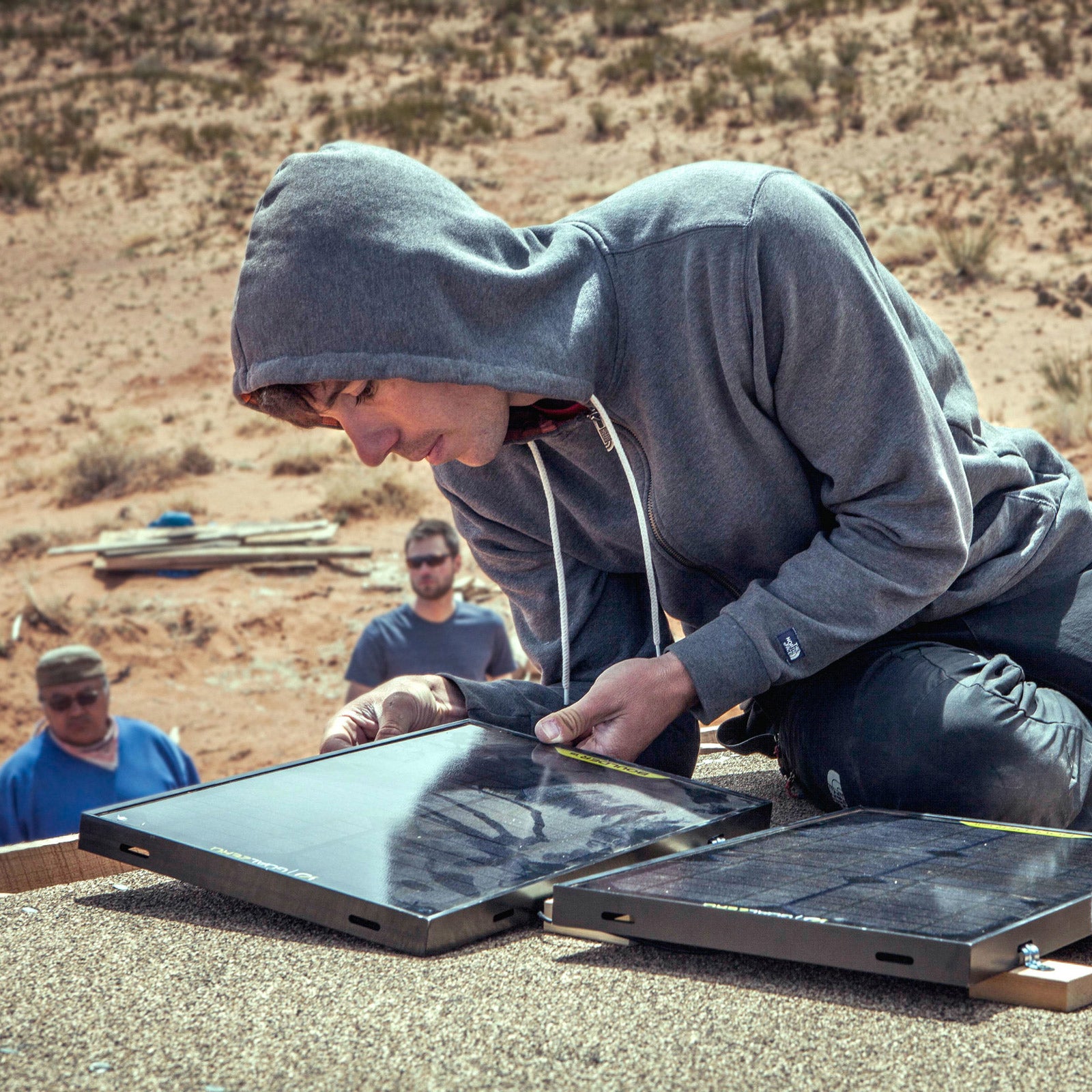Last winter, I took a trip to Vermont. The 3,662-mile round-trip journey spewed 1.3 tons (2,600 pounds) of carbon dioxide into the atmosphere per passenger—at least, that’s what carbon calculator told me. I felt sick.
Travel is one of the great ironies of the outdoor lifestyle. It’s the foundation for almost everything we do, be it driving to the trailhead after work, road-tripping to climb in Yosemite, or flying to Japan for that dream ski trip. It’s also one of the to climate change, which threatens the wild places we cherish.
For years carbon offsets have provided a quick and easy way for people to reduce their impact. Take, for example, that round-trip flight to Burlington. For $20.69, Native Energy will deliver water filters to Ethiopian villages to reduce the need for carbon-producing wood fires to boil unsanitary water. The emissions savings supposedly bring my flight’s net carbon footprint to zero.
But are offsets the best way to mitigate the impacts of our outdoor lifestyles? In its , the Intergovernmental Panel on Climate Change laid out to resource management and infrastructure required to prevent earth’s temperature from rising 1.5 degrees Celsius. Given the drastic governmental action needed to change the course of the planet, are we better off donating money to political candidates and causes that advocate for environmental policy change?
Obviously, the best thing to do is a little bit of both. But for people who are short on time and money—i.e., most of us—both is not always possible. So I decided to conduct a thought experiment: Assuming you can only do one thing, what is the most effective way to spend that $20.69?
Carbon offsets have been around since the late 1990s, and their popularity has waxed and waned over the years. On the surface, it all seems simple. You shell out a certain amount of money for a company to take carbon out of the atmosphere (a removal offset), or prevent new carbon from entering the atmosphere (an avoidance offset), essentially canceling out your emissions. This can mean planting trees, protecting existing forests, helping farmers transition to regenerative agriculture practices to sequester more carbon in the soil, or funding a wind farm or a system to turn methane from agriculture or landfills into clean energy.
But in fact, offsets are incredibly confusing. First off, you need to make sure that the emissions reductions you’re paying for are actually happening, and that they are additional to those that would have occurred without your purchase. Second, the calculations behind offsets are kind of a black box. Use four different carbon calculators and you’ll get four different figures for your footprint and four different dollar amounts to offset it. (For my Vermont trip, quoted me 2,368 pounds of carbon dioxide emissions at $11.82, quoted me 1,240 pounds at $6.23, and quoted me 2,700 pounds at $34.27.) “The cheapest offsets are sometimes the worst ones,” says Matthew Kotchen, a professor of economics at the Yale School of Forestry and Environmental Studies.
“I mean,” says climber Alex Honnold, “for average people, the best thing is to freaking vote.”
The market for voluntary carbon offsets (as opposed to offsets legally required under cap-and-trade systems) is relatively new. As a result, there is little government oversight, aside from a brief stipulation in the Federal Trade Commission’s , which state that companies cannot sell the same emission reduction twice or sell emissions reductions that are required by law, and must define whether a reduction has already happened or will happen in the future.
Instead, to prove that their claimed emissions reductions are real and additional, offset companies can choose to get certified by one of several independent organizations, like and the .
As long as you go with an offset that has one of these certifications—like Native Energy—most experts seem to think that’s still a worthwhile thing to do. “Since greenhouse gases don’t respect international borders, offsets can be an effective way of making a global impact,” says Joe Árvai, a professor of sustainable enterprise at the University of Michigan. But they’re not the only thing to do.
Mario Molina, executive director of Protect Our Winters, puts it bluntly. “We are hemorrhaging greenhouse gases, putting out 100 million tons of carbon dioxide or equivalent every day,” he says “It’s great if we can plant some trees in Costa Rica. Those may sequester 200 or 400 or even 1,000 pounds of carbon dioxide. But we’re still gonna bleed to death.” In other words: carbon offsets are a decent Band-Aid, but will only be effective in the long run if coupled with massive collective action. “There is nothing as important as getting the right people into positions of power,” says Deborah Markowitz, a visiting professor of environmental policy and leadership at the University of Vermont.
So, about that thought experiment: unsurprisingly, the answer isn’t so black and white. The decision to purchase offsets versus make political donations is entirely subjective. “It depends on whether you want to contribute to a general movement or do something more tangible,” says Kotchen. Both are important, he argues.
Skier and climate activist Caroline Gleich takes the political route, prioritizing local and state-level city council meetings where transitioning to renewable-energy infrastructure is on the docket. Climber Alex Honnold prefers to take direct climate action himself—planting trees, with an offset company called , and equipping houses in impoverished areas with solar panels, through his —rather than putting money toward politicians that may not get elected and may even flip-flop on policy decisions once in office. (Both Honnold and Gleich have also in D.C. with the American Alpine Club .)
If I had to choose just one financial act, I’d be inclined to donate to political candidates in close races, and not just ones in my own state of New Mexico. Admittedly, carbon offsets feel more absolute. That is part of their allure. But the possibility of far-reaching environmental policy change wins me over. Besides, doing research to identify the races most in need of financial support nationwide forces awareness beyond the scope of your own existence—something we could all benefit from. And donating on the hope of change represents exactly the kind of leap of faith that makes democracy thrive: faith that our opinions and voices matter.
And, life isn’t a thought experiment. In reality, we all have multiple tools at our disposal that don’t cost a dime. Most experts recommend purchasing offsets or donating politically and then also volunteering time to make phone calls, attend rallies, or engage in local policy hearings. “I mean,” Honnold says, “for average people, the best thing is to freaking vote.”
The problem is that many of us get so caught up in the guilt over our carbon footprint that we stop ourselves from doing anything at all, lest we do the wrong thing. “I think it’s better to do a little bit of everything than to think about it for a few years trying to figure out the absolute best course of action,” Honnold says. “Don’t let perfect be the enemy of good.”


